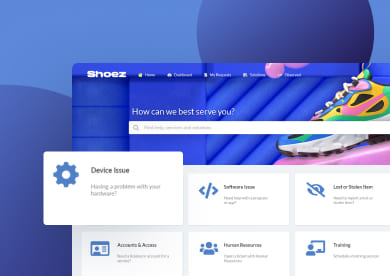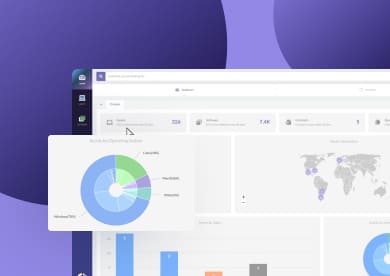Writing technical documentation often feels harder than it should. Not because it's especially complex, but because it's easy to lose sight of who you’re writing for, or how much context is enough. Good documentation bridges gaps — between users and systems, developers and maintainers, support teams and customers.
And yet, poor documentation is everywhere. Unstructured documentation and Knowledge Management can cost a business an average of 25% of its annual revenue. If your team is stuck interpreting vague system manuals or rewriting unclear setup instructions, that’s time and money lost.
Let’s walk through what technical documentation includes, how to write it, and some expert tips to structure it.
What is technical documentation?
Technical documentation is a structured set of documents that explain the design, functionality, operation, or maintenance of a product or process. It can be created for end-users, developers, IT teams, or internal departments.
While other forms of documentation (like marketing or legal content) focus on persuasion or compliance, technical documentation is focused on usability, clarity, and repeatability. It’s meant to answer the reader’s questions without relying on external explanations.
Types of technical documents
Here are some of the most common types of technical documentation:
- User manuals and guides – Step-by-step content that helps users interact with software or hardware
- API documentation – Reference materials and usage examples for developers
- System architecture documents – Diagrams, frameworks, and tech stack explanations for technical teams
- Standard operating procedures (SOPs) – Internal documentation for repeatable tasks and service operations
- Installation and configuration guides – Setup instructions for tools or environments
- Troubleshooting guides – Symptom-based or scenario-driven instructions to solve known issues
- Knowledge base articles – Short, focused guides for support teams or self-service portals

Benefits of proper technical documentation
Good technical documentation doesn’t just help users follow instructions — it supports business continuity, reduces support overhead, and strengthens internal alignment.
Here are a few practical benefits:
- Reduces support requests: When users or internal teams have access to clear instructions, they’re less likely to open tickets or escalate issues unnecessarily.
- Speeds up onboarding: New hires, especially in IT and development roles, can get up to speed faster with well-documented systems, processes, and configurations.
- Improves product usability: Manuals, FAQs, and guides reduce friction for end users and reduce guesswork in product use or system interaction.
- Facilitates collaboration: Shared documentation acts as a single source of truth, reducing miscommunication between departments or across distributed teams.
- Helps with audits and compliance: SOPs and change logs support regulatory compliance, especially in environments with strict operational requirements.
- Preserves knowledge: When people leave the company, documented processes and systems keep their knowledge accessible to others.
How to write technical documentation: Step-by-step process
There’s no single format for technical documentation, but the structure below works as a starting point. You can adjust it depending on the content type, audience, and delivery method.
- Define the audience and purpose - Before writing anything, clarify who the documentation is for. Are they IT professionals, developers, business users, or external customers? Define what problem the document should help them solve.
- Create an outline - Plan the document structure: key sections, headings, subsections, and references. This helps organize your thinking and avoids rework later.
- Gather relevant information - Pull in technical specs, interviews with SMEs (subject matter experts), diagrams, screenshots, and links. Don’t assume the reader knows how the system works.
- Choose the right format - Consider if the content is better as a PDF, HTML page, in a knowledge base, or embedded within software. For instance, API documentation usually lives online with versioning.
- Use templates and style guides - Maintain consistency across documents. Use tech document templates to standardize titles, sections, fonts, and formatting. Include metadata like version numbers and authors.
- Include visuals where useful - Diagrams, flowcharts, screenshots, and tables often clarify processes better than words. Just make sure they’re labeled and relevant.
- Review and test - Have someone from the target audience read and follow the documentation. What’s missing? What’s unclear? Update accordingly.
- Publish and update - Publish the document where it’s easy to find — don’t bury it in a shared drive or hidden tab. Set a review cadence and include dates to help others know if the information is still valid.
Organization-wide technical documentation best practices
Technical documentation doesn’t begin and end with IT. In organizations that adopt an Enterprise Service Management (ESM) approach, every team becomes a service provider in some way — HR, Legal, Facilities, Finance, and others. Each area runs on repeatable processes that people need to understand and follow.
Writing documentation in this context means stepping outside of IT norms. The audience changes, the vocabulary shifts, and the goals are more varied. You're no longer just explaining technical systems — you’re helping people across the company complete tasks, follow policies, and access services without confusion.
Here’s how to write technical documentation that works across departments:
- Keep articles modular and focused
Each entry should address a single task, topic, or question. For example, “requesting parental leave” or “booking a meeting room” should each live in their own articles. That keeps the content easy to read and easy to update. - Use a consistent structure
A predictable format helps people scan and follow instructions more easily. For example, a simple structure can be: purpose or context → step-by-step instructions → links to forms or related articles → date of last update. - Include metadata and tags
Categorizing articles makes it easier to browse or filter by department, topic, or content type. Tagging also helps with reporting and content maintenance down the line. - Write for the right audience
Articles should reflect the language and tone of the department they represent. An onboarding checklist for HR will look and sound different from printer setup instructions. Avoid jargon unless it's common in that specific area. - Link to service processes when needed
If the article involves submitting a request, make that step clear. Include links to the appropriate form or ticket submission page, and mention what happens after it’s sent. - Support self-service
Aim to answer the question fully, so users don’t need to follow up. Keep the language direct, anticipate follow-up questions, and explain what to do if something doesn’t work as expected. - Update based on real use
Review content based on what people search, read, and flag. Usage stats and feedback help you spot what’s outdated, unclear, or missing.
When teams contribute to a shared knowledge base with consistent, clear documentation, support becomes faster, requests go down, and people get more done on their own. It’s not just about having documentation — it’s about making it useful across the organization.
Technical documentation samples
Once you have a structure in mind, templates help speed things up and keep documentation consistent, especially when multiple people are writing across teams.
Here are some basic formats you can adapt, depending on the type of document you're creating:
User guide or how-to article
Title: How to request a new monitor
Purpose: Short one-line context of what this article helps with.
Scope: Who this applies to (e.g., remote employees, hybrid roles, etc.).
Steps:
- Log in to the service portal.
- Go to "IT Equipment Requests."
- Select “Monitor” and choose a model.
- etc
Related articles: link to “equipment policy” or “how to check ticket status.”
Last updated: [date]
SOP (standard operating procedure)
Title: Onboarding checklist for new employees
Document owner: HR department
Frequency: every new hire
Steps:
- Send welcome email
- Schedule orientation session
- Assign equipment
- etc.
Linked forms: Onboarding form, access request form
Approval required: yes – HR lead
Last updated: [date]
Troubleshooting guide
Title: can’t connect to the VPN
Issue summary: Describe the symptoms (e.g., unable to connect to the VPN, error messages).
Check before starting:
- Confirm internet connection
- Verify credentials are correct
Steps to fix:
- Restart the VPN client
- Check firewall settings
- Try connecting with a different network
Still not working? Link to create a support ticket or contact IT.
Last updated: [date]
Conclusion
Technical documentation often gets treated like an afterthought—until someone actually needs it. Writing it well takes more than filling in a template or describing a process. It means thinking about how people work, what they need in the moment, and how information can stay useful over time.
Clear technical documentation saves time, reduces confusion, and scales knowledge across your team. Whether you’re writing an internal SOP, a user manual, or an API reference, the approach is the same: understand the audience, organize information clearly, and review before publishing.












